Education is a powerful tool for breaking the cycle of poverty. Educating girls specifically has enormous and far-reaching benefits, including reducing rates of child marriage, promoting healthier and smaller families, improving wages and jobs for women, and empowering women to become leaders at community and government levels.[i]
Yet worldwide, education is in crisis. Decades of squeezed public funding as a result of public sector wage bills constraints, have resulted in low pay and teacher shortages. At least 69 million more teachers are needed by 2030 if we are to meet the Sustainable Development Goal on Education.[ii]
In 2016 the Education Commission Report observed that globally 97% of the financing available for public education systems comes from domestic resources.[iii] All the bilateral and multilateral aid for education, and all the loans for education, add up to less than 3% of total resources. Yet international meetings on education routinely spend over 90% of their time talking about the 3% and largely ignore what can be done to expand domestic financing. This was challenged of last year’s Transforming Education Summit.
Breaking out of the bubble to transform education financing
A new briefing Breaking out of the bubble to transform education financing by ActionAid, the Tax and Education Alliance, Grade, the Centre for Economic and Social Rights, The Global Campaign for Education and the Tax Justice Network shows how breakthroughs on tax, debt and austerity are fundamental for making progress on education. The briefing is based on an extensive new analysis of different data sets in 89 partner and eligible countries of the Global Partnership for Education.
The findings are shocking.
Global Partnership in Education countries are losing over $47 billion every year in potential tax revenue, largely owing to aggressive tax avoidance by the wealthiest companies and individuals.
With a global debt crisis looming, of the 71 countries studied where data is available 90% are at significant risk of debt distress. Shockingly, 25 countries are spending more on servicing their external debts than they are on education.
Teachers’ salaries are the social spending that is needed on education
It is obvious that nothing is more important for an education than a good teacher, and teachers’ salaries make up the majority of most education budgets worldwide. Teachers’ salaries are the social spending that is needed on education. However, where intensive studies have been conducted to look at the IMF policy steer on public sector wage bills, 67% of countries (24 countries) have been advised to cut wage bills and 28% (10 countries) have been advised to freeze them. 75% of Global Partnership in Education countries are planning to cut overall public spending as a percentage of GDP over the coming three years.
There is a solution to the crisis in education
If the countries studied increased their tax-to-GDP ratios by five percentage points (as deemed realistic in a key IMF paper) they could raise an additional US$ 455 billion every year. If 20% of this $455 billion was allocated to education (in line with the widely accepted benchmark) that would raise over $93 billion for education every year. This is enough to transform the financing of public education – whilst also raising substantial revenue for health, other public services and responding to the climate crisis.
This is a way to achieve education goals alongside other Sustainable Development Goals, avoiding the inter-sectoral tensions that arise when education advocates focus only on increasing the budget share allocated to education.
We need action on tax, debt restructuring and austerity to end the crisis in education.
[i] Sperling G and Wintrop R. 2016. What Works in Girls Education. Evidence for the world’s best investment. Brookings Institution Press: Washington DC.
[ii] UNESCO Institute of Statistics (2016) http://uis.unesco.org/en/files/fs39-world-needs-almost-69-million-new-teachers-reach-2030- education-goals-2016-en-pdf
[iii] This varies with countries from different income groups but even in low income countries only 18% of total spending comes from overseas development aid – and in lower middle income countries it is just 2% (see Education Finance Watch 2021)


